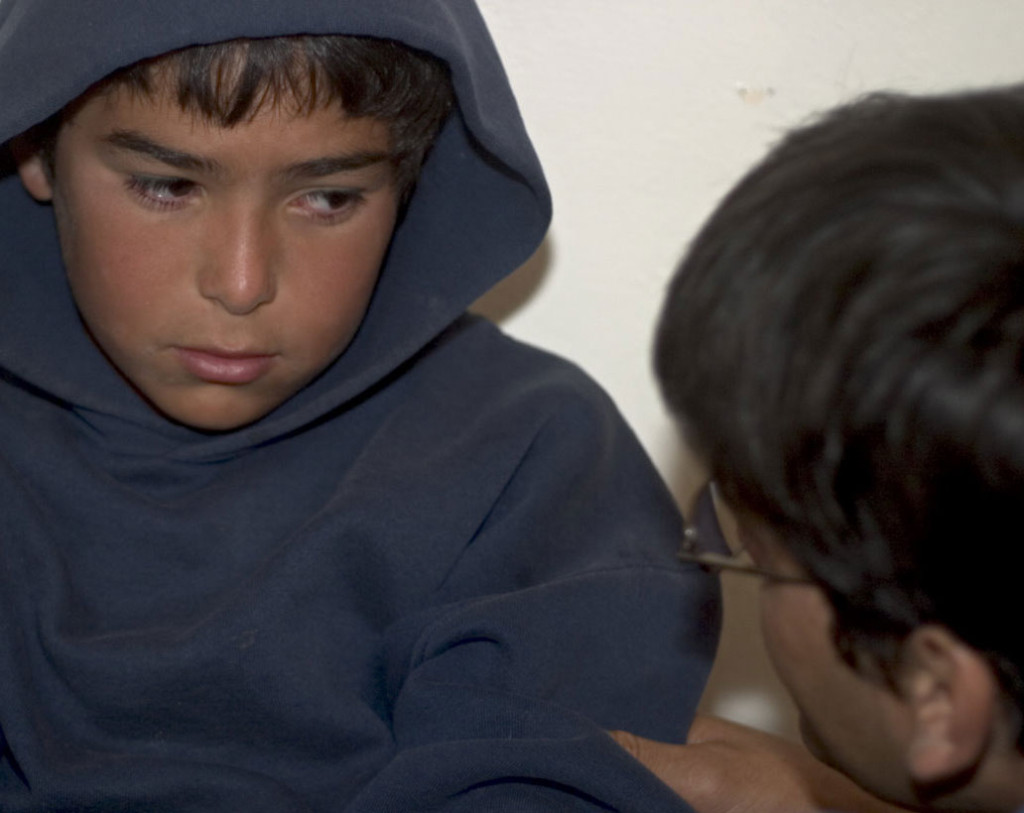Looking for Part 2 of this article? Go here.
Is your child favoring her other parent over you?
If you have a child favoring one parent, welcome to a very large club full of spurned but loving parents. Being rejected by your own child is one of the hardest experiences a parent can have, and one of the most universal.
All of us at Hand in Hand have been through this experience, and there’s help! You are just the right person to help your child to run into your arms again. Reclaiming your close relationship with your child may take some courage and some emotionally-charged experiments, but hugs, giggles, and happiness at the sight of you are not that far away.
Goodbyes are Hard on Our Infants and Children
 First, I’d like to reassure you that children’s feelings of wanting one parent and not the other are common. There are lots of causes, but I think the most common culprit is the daily grind. Usually, one parent is away from the family more than the other. One parent leaves to go back to work sooner after a baby’s birth than the other. One parent is the one to stay home with a child when he or she is ill. One parent nurses. One parent tends to be the one who comes when there’s trouble.
First, I’d like to reassure you that children’s feelings of wanting one parent and not the other are common. There are lots of causes, but I think the most common culprit is the daily grind. Usually, one parent is away from the family more than the other. One parent leaves to go back to work sooner after a baby’s birth than the other. One parent is the one to stay home with a child when he or she is ill. One parent nurses. One parent tends to be the one who comes when there’s trouble.
If we lived in a culture that allowed both parents to have lots of relaxed time with their children every day, there might be fewer spurned parents with aching hearts. But here we are, doing our parenting best in a world where at least one parent has to be away from the family, working hard. Goodbyes are frequent and often rushed. Hours away are long.
Every separation with an infant or young child is a big deal for the child. It doesn’t matter that it’s routine. It hurts! Our babies are born to be adored, up close and personal. They’re not happy with goodbyes. They take our departures personally. It feels like “Daddy doesn’t love me,” or “Mommy always has somewhere she has to be.” And we parents find it difficult to be warm and big-hearted when we have to rush away in the mornings, go off alone, and come home late. We feel pressed and often guilty, and this dims the light in our eyes and the warmth in our being. Our own feelings make it harder to show our love. So the daily goodbye is hard on everyone.
(“Losing it” in the presence of your child—yelling, fighting, punishing, reaching a point close to violence, or going over that edge—is another reason a child might feel unsafe with one parent and prefer the other. A parent can repair this kind of damage to a child’s sense of safety by making a commitment to stop all heated outbursts before they start, getting help to defuse the emotional roots of their own out-of-bounds behavior, and then following the steps below.)
Feelings of hurt throb under the surface when your child rejects you
When a child reunites with you after you’ve been away, she can’t always connect with you. The minute she sees you, her emotional memory fires up the last feeling she had as you walked away. Up comes the hurt from this morning, last night, yesterday morning, or the morning before that. In her emotional memory, events from the past are just as big and just as painful right now as they were when the feelings first throbbed. Perhaps they’re more painful because they’ve been festering inside for the past day or week or month. It’s highly uncomfortable for her. She can’t look you in the eye. She can’t be her warm and cheerful self with you.
And if she begins to fuss or cry, most likely, you will try to fix it. You’ll give her another cracker, although it’s almost dinner time. You’ll wipe her tears and try to make her laugh. You might hand her a toy to distract her, or tell her not to cry about such a small thing. You’ve been taught that this is your job—stop the crying, so she stops hurting inside.
Listening to your child cry will help her feel closer to you.
The insight that is so useful to the parents who have seen it work is that children’s tears and tantrums serve a purpose. If you want to have a loving, close and snuggly time with the child who is rejecting you, move a little closer to her, pay warm attention, don’t try to fix a thing, and allow her to cry her heart out about whatever little thing started her tears. Offer her your kindness. Offer your listening ear. Connect with her while she cries or tantrums. Let her get that strong feeling of hurt out of her system by crying it away.
We call this Staylistening. It’s a partnership between you and her: you listen to her feelings, and she shows you how much they hurt until she doesn’t need to show you any longer. Staylistening delivers your love, right at the moment, your child’s heart is aching for it. It’s elegant. And it works.
Listening to your child’s feelings delivers a powerful dose of caring
 You bring yourself—your love, your gentle smile, your patience, and your time. Your child brings her upset. It will almost always be about something trivial or nonsensical. She doesn’t want to go home with you. She doesn’t want her seat belt on. Or she doesn’t want you to take off her jacket, only the other parent can do it! Or she doesn’t want to sit next to you at the table for dinner. She’ll find a way to let you know that big feelings are hot on the griddle.
You bring yourself—your love, your gentle smile, your patience, and your time. Your child brings her upset. It will almost always be about something trivial or nonsensical. She doesn’t want to go home with you. She doesn’t want her seat belt on. Or she doesn’t want you to take off her jacket, only the other parent can do it! Or she doesn’t want to sit next to you at the table for dinner. She’ll find a way to let you know that big feelings are hot on the griddle.
Don’t hurry her to do the simple thing is that she’s chosen to cry or protest about, but don’t stop expecting her to do it, either. Just Staylisten. Stay, offer connection, and listen to the hurt that’s pouring out. When her crying slows down, just ask gently whether she’s ready to go home with you, or put her seat belt on, or let you take off her jacket, or sit next to you. When there’s no more hurt at the mention of the next thing that needs to happen, then it’s time to pick her up and go to the car, fasten her seat belt, take off her jacket, or bring her to the table so she can sit down next to you.
This could take 5 minutes, or it could take 5 times that long, depending on how long she’s been waiting to get in a good, cleansing cry. She’ll figure out how out how long she needs to cry or tantrum to be able to accept your love. She knows what to do.
Your child will do some elegant, long-needed healing from hurt. And when she’s done, she will feel closer to you and will most likely be eager for fun. She’s been relieved of the hurt that made her edgy, whether it happened just this morning, or has been piling up for months.
Special Time is a powerful reconnection tool
There’s a second powerful Listening Tool that helps parents connect, and reconnect with their children. We call it Special Time. You decide on a time when you can devote 100% of your attention to your child, for a limited period of time, anywhere from 5 minutes to 45 minutes or an hour. Start with shorter times at first, while you get the hang of this No-Distractions, No-Multitasking discipline. Tell your child, “Tonight, I’m going to do Special Time with you for 10 minutes. I will play whatever you want to play!” Make your date, and then follow through with enthusiasm and interest.
Don’t teach, don’t suggest things to do, don’t guide, don’t change your child’s agenda in any way except to make things safe. So if your child wanted to throw pebbles in the air, you would move her to a spot where the pebbles weren’t likely to hit anyone walking by. But you wouldn’t ask her to count the pebbles, or show her how gravity works on pebbles, or tell her the “right way” to throw pebbles. What she does with her pebbles is entirely up to her. When the time is up, let her know, give her a big hug, and promise another Special Time soon.
Special Time helps your child take the reins in her relationship with you, and show you things about herself that she wants you to know and see. If laughter bubbles up, that’s a very good sign. Laughter helps children feel more closely connected, and it builds their confidence. Don’t tickle, but do go ahead with the physical clowning that lets your child’s laughter keep rolling.
Does your child need help with separation anxiety? We've put all our best thinking into the new online video class, “Say Good-bye to Separation Anxiety.”
